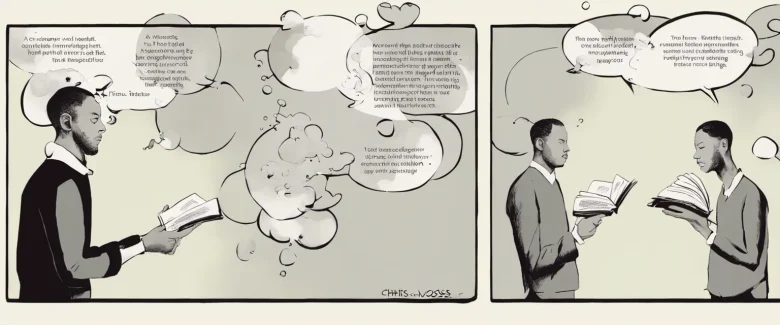In the captivating book “Never Split the Difference: Negotiating As If Your Life Depended On It,” written by Chris Voss, the former lead international kidnapping negotiator for the FBI, expertise in high-stakes negotiations is distilled into practical strategies applicable to everyday interactions. With real-life anecdotes and an engaging writing style, Voss offers a refreshing perspective on negotiation, emphasizing empathy, active listening, and unconventional tactics to achieve optimal outcomes. Drawing from his extensive experience negotiating with criminals, terrorists, and hostage-takers, Voss delivers invaluable insights that are equally relevant for navigating business deals, personal relationships, and any scenario requiring effective communication.
Chapter 1: Introduction to Negotiation
Chapter 1 provides an overview of the author’s experience as a former FBI international kidnapping negotiator and lays the groundwork for effective negotiation techniques.
Chris Voss emphasizes the importance of negotiation in both professional and personal aspects of life. He starts by dispelling the common misconception that negotiation is primarily a strategic battle to win at all costs. Instead, Voss argues that it is a communication skill that enables individuals to get what they want while also building and maintaining positive relationships.
The author introduces the term “tactical empathy,” which emphasizes understanding the emotions, needs, and motivations of the other party in a negotiation. Voss believes that this empathetic approach helps establish rapport and trust, thereby creating the foundation for successful negotiations.
To illustrate the power of tactical empathy, Voss recounts an intense kidnapping negotiation he led in the Philippines. By demonstrating genuine empathy and actively listening to the kidnappers’ demands, Voss managed to cultivate trust and eventually secure the safe release of the hostage. This real-life example showcases the practical application of the principles he emphasizes throughout the book.
Additionally, Voss discusses the pitfalls of using manipulative tactics or relying on compromise, as they often result in unsatisfactory outcomes. He encourages readers to adopt a mindset of collaboration by seeking mutually beneficial solutions and focusing on long-term relationships rather than short-term gains.
Overall, the introductory chapter serves as a foundation for the negotiation strategies and techniques that Voss will delve into further in subsequent chapters. It sets the stage for a more empathetic and understanding approach to negotiation, highlighting the importance of communication skills in achieving successful outcomes.
Chapter 2: Be a Mirror
Chapter 2 introduces the concept of mirroring as a powerful negotiation tool. Mirroring involves repeating the last few words the other person said, or simply mirroring their body language and tone of voice.
Voss emphasizes the importance of mirroring in building rapport and fostering trust during negotiations. He explains that mirroring creates a connection with the other person, making them more likely to open up and share valuable information. Additionally, it can help to diffuse tense situations and reduce aggression or defensiveness.
The chapter provides several practical examples of mirroring in action. Voss describes how he used mirroring to successfully negotiate with bank robbers during his time as an FBI agent. By mirroring the robbers’ statements, he established a sense of understanding and empathy, encouraging a more cooperative attitude.
The author also highlights the value of mirroring in everyday interactions. Whether it’s in a sales negotiation or a personal dispute, mirroring the other person’s words or behaviors helps to create a positive atmosphere and encourages a more productive conversation.
Voss offers some key pointers for effective mirroring. It’s important to use a respectful tone and not to mimic the other person too closely, as that may come across as mocking. A subtle and empathetic approach is the key to successfully implementing mirroring techniques.
In essence, Chapter 2 emphasizes that mirroring is a powerful tool that can help negotiators establish rapport, build trust, and create a cooperative environment. By mirroring their counterparts, negotiators can better understand the other side’s perspective and achieve more successful outcomes.
Chapter 3: Don’t Feel Their Pain, Label It
This chapter focuses on the importance of using effective communication techniques to influence and negotiate in difficult situations.
Voss emphasizes the need to avoid attempting to understand or sympathize with the other person’s emotions. Instead, he suggests labeling their emotions and statements to gain control of the situation. Labeling involves acknowledging and verbalizing the other person’s feelings without necessarily agreeing with them. By labeling emotions accurately, negotiators can establish a connection and defuse tense situations.
Voss offers three steps to effectively label emotions: observe, identify the emotion, and articulate it. Observing entails paying close attention to the other person’s body language and tone of voice, which can reveal underlying emotions. Identifying the emotion requires finding the core feeling behind the person’s words or actions. Articulating the emotion involves acknowledging it explicitly and expressing it empathetically.
The author argues that labeling emotions help validate the other person’s perspective and make them feel heard and understood. When people feel understood, they become more likely to open up and collaborate in finding mutually beneficial solutions. This technique also acts as a form of mirrored empathy, allowing negotiators to regain control by defusing any negativity and redirecting the conversation towards a solution-oriented mindset.
Voss concludes the chapter by emphasizing the importance of being tactful in labeling emotions. It is crucial to use labels to foster a positive atmosphere rather than provoke defensiveness. By mastering this technique, negotiators can effectively navigate difficult conversations and increase their chances of achieving successful outcomes.
Chapter 4: Beware “Yes,” Master “No”

Chapter 4 explores the importance of creating trust and establishing a strong rapport with the opposing party during negotiations. Voss emphasizes the power of hearing a “no” response and how it can actually be more beneficial than a “yes.”
Voss introduces the concept of the “No-Oriented counterpart” – someone who instinctively resists by saying “no” and feels in control of the situation. By allowing the other party to say “no” upfront, it allows them to feel secure, in control, and more willing to engage in further negotiation. Voss provides examples of situations where he intentionally seeks a “no” response from his counterpart and demonstrates how it opens the door to further discussion.
Furthermore, the chapter discusses the concept of calibrated questions – open-ended questions that start with “what” or “how” – that encourage the opposing party to share information and elaborate on their thoughts. These questions help uncover the other party’s needs and motivations, providing valuable insights for negotiation.
Voss also emphasizes the importance of active listening during negotiation. By completely listening to the counterpart’s responses, it establishes a connection and trust, making the counterpart more willing to reveal their true motivations and concerns. It is crucial to acknowledge and validate their feelings, demonstrating empathy and understanding.
The chapter concludes by stressing that successful negotiation isn’t about reaching a “yes” but rather finding a mutually beneficial outcome where both parties feel satisfied. By creating an atmosphere of trust, utilizing calibrated questions, and actively listening, negotiators can navigate conversations more effectively and achieve better results.
Chapter 5: Trigger the Two Words That Immediately Transform Any Negotiation
Chapter 5 of “Never Split the Difference” by Chris Voss is titled “Trigger the Two Words That Immediately Transform Any Negotiation.” In this chapter, Voss discusses the power of the words “that’s right” and how they can be used to create a positive shift in negotiations.
Voss explains that when someone feels heard and understood, they are more likely to be open to compromise and finding a solution. The phrase “that’s right” acts as a verbal affirmation, signaling to the other party that their perspective has been acknowledged and validated.
To successfully use “that’s right,” Voss suggests mirroring, a technique he discussed in earlier chapters, where one repeats the last few words of what the other person says. By mirroring, one can then follow up with “that’s right,” affirming the meaning and value of the other person’s perspective. This approach helps to build rapport, trust, and understanding between the negotiators.
Moreover, Voss explains the psychological impact of “that’s right.” When people hear those words, their brain experiences a release of dopamine, resulting in a positive feeling. This reinforces their belief that they are being understood and increases their receptiveness to productive negotiation.
The author provides examples from real-life negotiations, including hostage situations, to emphasize the effectiveness of “that’s right” in diffusing tension and promoting empathy. By using this simple phrase, negotiators can create a cooperative atmosphere and lead the conversation towards a mutually beneficial outcome.
In summary, Chapter 5 of “Never Split the Difference” highlights the importance of using the phrase “that’s right” as a tool for acknowledging and validating the other party’s perspective. By doing so, negotiators can build trust, understanding, and enhance the chances of a successful negotiation.
Chapter 6: Bend Their Reality
Chapter 6 of “Never Split the Difference” by Chris Voss is titled “Bend Their Reality.” In this chapter, Voss explores the power of reframing a conversation to shift the other party’s perspective and gain a more favorable outcome.
Voss begins by highlighting the importance of labeling emotions during negotiations. By acknowledging and articulating the other person’s feelings, you demonstrate empathy and create a more collaborative environment. This technique allows you to understand their needs better and build trust.
The chapter then delves into the concept of the “most dangerous negotiation.” Voss explains that when a person feels unheard or disregarded, they tend to become increasingly aggressive or defensive. The key to handling such situations is to actively listen and make the other person feel heard, thereby diffusing their anger and decreasing tension.
The author introduces the technique of tactical empathy, which involves understanding the other person’s perspective and using it to influence their decision-making process. By aligning with their emotions and position, you can guide them towards a more favorable outcome without resorting to manipulation or deception.
Voss also stresses the importance of reframing challenges as opportunities. Instead of focusing on obstacles or disagreements, he suggests highlighting the shared goals and finding creative solutions that benefit both parties. This approach allows for more collaborative problem-solving and increases the chances of reaching a mutually beneficial agreement.
In summary, Chapter 6 of “Never Split the Difference” emphasizes the significance of empathy, effective listening, and reframing during negotiations. By demonstrating understanding, diffusing tension, and finding common ground, negotiators can steer conversations towards more positive outcomes that satisfy both parties’ needs.
Chapter 7: Create the Illusion of Control
Chapter 7 of “Never Split the Difference” by Chris Voss is titled “Create the Illusion of Control” and focuses on the importance of maintaining the perception of control during negotiation. Voss emphasizes that humans have a deep need for control and by understanding and utilizing this, negotiators can gain a strategic advantage.
The chapter begins by discussing the inherent fear people have of losing control, which triggers an amygdala response, leading to irrational decision-making. Voss explains that by granting the other party a sense of control, negotiators can help them feel more comfortable, reducing resistance and increasing the likelihood of a successful outcome.
One technique Voss suggests is the use of calibrated questions. These can help the negotiator gather information while maintaining the appearance of control. By asking questions like “how am I supposed to do that?” or “how would you make that happen?”, the negotiator keeps the conversation focused on the other party’s responsibility while collecting valuable insights.
Another technique introduced in this chapter is the use of “no-oriented” questions. By asking questions that allow for a negative response, such as “Would it be ridiculous to consider…?” or “Is this a bad time to talk about…?”, the negotiator takes advantage of the other party’s instinct to protect control. This tactic guides the conversation and redirects the focus in a way that benefits the negotiator.
Overall, Chapter 7 highlights the importance of creating the illusion of control in negotiation. By understanding human psychology and utilizing techniques like calibrated questions and no-oriented questions, negotiators can increase their chances of reaching favorable outcomes while maintaining strong rapport with the other party.

Chapter 8: Guarantee Execution
Chapter 8 of “Never Split the Difference” by Chris Voss focuses on the importance of guaranteeing execution in negotiations. Voss highlights that a successful negotiation is pointless if the agreed-upon terms are not implemented.
The chapter begins by emphasizing the significance of establishing a plan to ensure execution and navigating potential obstacles that may arise. Voss stresses the importance of tactical empathy in understanding the concerns of your counterpart, making them feel heard, and fostering a sense of trust between parties. By doing so, negotiations are more likely to be implemented successfully.
To guarantee execution, Voss introduces a strategy known as “the late-night FM DJ.” This technique involves summarizing the agreed-upon terms in writing, followed by reaffirming this summary through a recorded message. This recording should mimic a late-night FM DJ, using a tone that is soothing, charismatic, and engages the emotions of your counterpart. By sending this recording, it ensures that the agreement is being committed to and increases the chances of execution.
Additionally, Voss advises being ready to address any buyer’s remorse. Sometimes, after making a commitment, individuals may experience doubt or feel the need to reconsider the agreement. Proactively addressing these concerns and offering reassurance can help prevent any potential setbacks or rejections.
Ultimately, guaranteeing execution means ensuring that the agreed-upon terms are implemented, thus solidifying the success of a negotiation. By using strategies such as the late-night FM DJ technique and addressing buyer’s remorse, negotiators can increase their chances of successful execution and avoid potential roadblocks.
After Reading
In conclusion, “Never Split the Difference” by Chris Voss offers a refreshing and highly practical approach to negotiation. Through his extensive experience as an FBI hostage negotiator, Voss provides valuable insights and strategies that can be applied in various real-life situations. His emphasis on empathy, active listening, and tactical empathy challenges traditional negotiation methods and encourages readers to adopt a more assertive and thoughtful approach. With real-life examples and helpful exercises, Voss empowers readers to not only achieve better negotiation outcomes but also build stronger relationships. Overall, “Never Split the Difference” is a must-read for anyone seeking to enhance their negotiation skills and succeed in any bargaining situation.
Book Recommendation: Enhancing Interpersonal Skills
1. When I Say No, I Feel Guilty” by Manuel J. Smith: In this timeless classic, Smith explores the art of assertiveness and helps readers develop effective communication strategies. The book offers practical techniques to overcome guilt and improve interpersonal relationships, making it an invaluable resource for anyone looking to enhance their assertiveness skills.
2. Emotional Intelligence” by Daniel Goleman: Goleman delves into the significance of emotional intelligence and its impact on our personal and professional lives. Exploring self-awareness, empathy, and social skills, this book offers insights on managing emotions effectively, fostering better relationships, and achieving success through emotional intelligence.
3. Talk Like TED” by Carmine Gallo: Drawing inspiration from the captivating TED Talks, Gallo breaks down the secrets to delivering compelling and influential presentations. Readers will benefit from practical tips on public speaking, storytelling, and communication techniques that can engage any audience. This book is a valuable guide for those looking to enhance their communication skills in any professional or personal setting.
4. Crucial Conversations: Tools for Talking When Stakes are High” by Kerry Patterson, Joseph Grenny, Ron McMillan, and Al Switzler: This book offers essential tools for handling challenging conversations with finesse. It provides practical advice on managing conflicts, facilitating dialogue, and reaching mutually beneficial outcomes. With real-life examples and actionable strategies, “Crucial Conversations” is an invaluable resource for anyone seeking to improve their communication skills in intense situations.
5. Influence: The Psychology of Persuasion” by Robert Cialdini: Cialdini explores the psychology behind persuasion and the six key principles that influence human behavior. Understanding these principles can help readers enhance their communication skills, become more persuasive, and make better decisions. This book is a must-read for anyone looking to improve their ability to influence others positively.
By delving into “When I Say No, I Feel Guilty” by Manuel J. Smith, “Emotional Intelligence” by Daniel Goleman, “Talk Like TED” by Carmine Gallo, “Crucial Conversations” by Kerry Patterson, Joseph Grenny, Ron McMillan, and Al Switzler, and “Influence: The Psychology of Persuasion” by Robert Cialdini, you will gain a comprehensive understanding of interpersonal skills, communication, assertiveness, emotional intelligence, and persuasion. Applying the lessons from each of these books will empower you to navigate conversations, build better relationships, and achieve success in both your personal and professional life.



